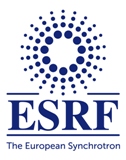Fluid-rock interaction in subduction zones: lawsonite composition as a tracer of fluid sources

ESRF Webinar
"Fluid-rock interaction in subduction zones: lawsonite composition as a tracer of fluid sources "
Thursday, May 25th, 2:00 p.m. (Paris time)
Presented by Prof. Donna Whitney, Head of the School and Department of Earth & Environmental Sciences in Minnesota University, USA
Venue: ONLINE
Prof. Donna Whitney is an expert in large scale geological processes and how this affects the dynamics of our planet or its climate, in particular she is working on plate tectonics and the transport of of water from the surface into the deep Earth, which are fundamental open questions in Earth sciences.
She is addressing these questions by combing observation from the field, laboratory and also synchrotron measurements.
ABSTRACT
Volatiles and other elements are transferred out of tectonic plates as they
subduct, influencing the composition of the overlying mantle and,
subsequently, arc magma, continents, the atmosphere, and oceans. A
geochemical archive of these fluid-mediated processes is in high-pressure
metamorphic rocks that have been exhumed from subduction zones to be
exposed at the Earth’s surface.
Oceanic crust subducted to ~10-300 km depths in all but the hottest
subduction zones contains *lawsonite*, a hydrous Ca-Al silicate that is
among the most H2O-rich phases in subducted oceanic crust and sediments.
Lawsonite end-member composition is CaAl2Si2O7(OH)2.H2O, but it is also a
significant carrier of Fe, Ti, Cr, U, Th, Pb, Sr, and REE. Owing to its
high H2O content and trace element abundance, lawsonite has a significant
role in element cycling in the Earth.
Despite its predicted abundance in active subduction zones, lawsonite is
rarely preserved in the geologic record because it easily reacts to
epidote-group minerals during exhumation. Occurrences of fresh lawsonite
are therefore great opportunities to determine its composition and use this
information to investigate subduction processes. I will present data on
lawsonite composition and propose that it is a sensitive indicator of
fluid-rock reaction that may allow detection of mantle rocks (serpentinite)
vs. sediments (carbonate, siliceous sediment) as fluid sources in
subduction zones. A recent development in this study is consideration of
lawsonite and epidote-group mineral composition in understanding the
oxidation state of subducted materials under different depth-temperature
conditions and chemical environments.
|
TO WATCH THE REPLAY OF THE WEBINAR, |



